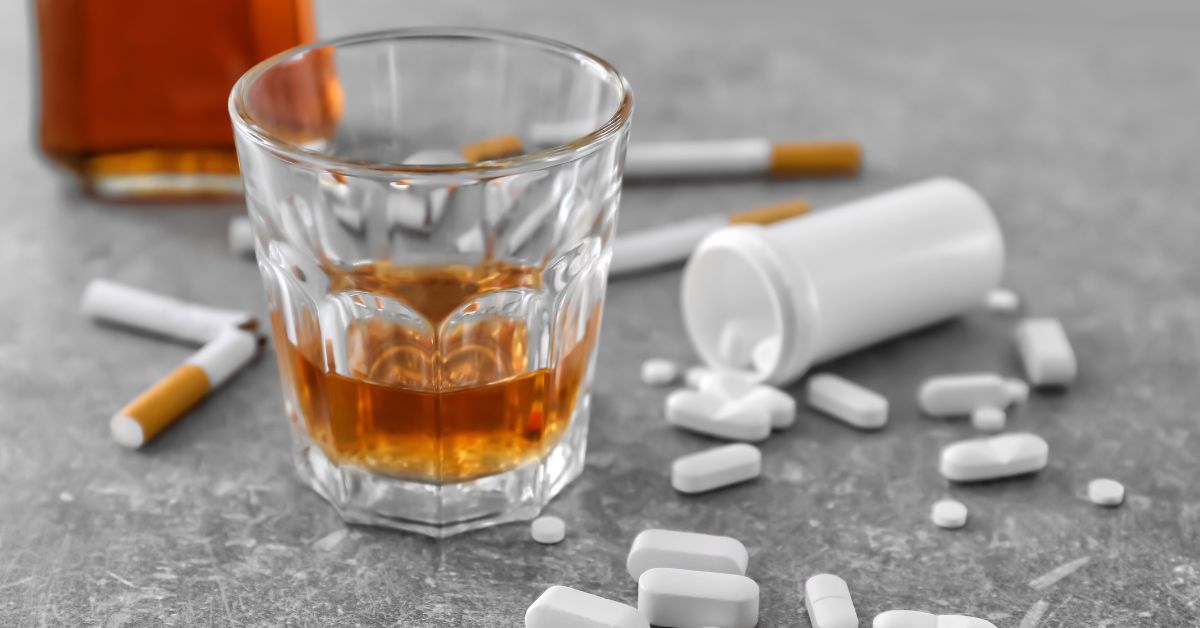As children, our kids were experts at sneaking cookies from the kitchen cupboard. It was exciting for them to pull off a successful plan and satisfying to enjoy the loot.
However, as they grow up and enter their teenage years, the risks they take become much more severe. Instead of cookies, they may be tempted to experiment with drugs, which can have devastating consequences.
The big question is, how do they end up in this situation? What combination of factors can lead your teen down the path of substance abuse? Is the environment, circumstances, and the influence of others responsible for it?
The Reality of Teens Getting Drugs and Alcohol
We need to acknowledge that many teenagers are familiar with drugs or alcohol, more than we’d like to think.
Sadly, nowadays, it’s common to see teens suffering from drug and alcohol abuse. This issue is not limited to underprivileged or rebellious youth, as substance abuse affects all socio-economic and demographic groups.
Reasons Behind Teen Drug Use
We have all experienced the challenges of adolescence, struggling to find our place, exploring our curiosity, and managing a complex mix of emotions and stress. Because of that, it should be easier to understand and deal with an addicted loved one, right?
In fact, getting a deeper understanding of why teenagers turn to drugs can provide valuable insight into their mental state, surroundings, and the reasons behind drug use.
Let’s delve into some key triggers:
- Peer Pressure: Some people want to fit in so bad that they accept to do harmful things, like doing drugs.
- Stress: Teens get high to cope with pressure from school, as an escape from complex realities, or to deal with untreated mental illnesses.
- Curiosity: Adolescence is marked by a big desire to explore and understand how the world works, which, unfortunately, can lead to experimental drug use.
- Coercion: Sometimes, teenagers may be forced or manipulated into trying and subsequently buying drugs from friends, older siblings, or shady adults.
Remember that not all teenagers who experiment with drugs become long-term users or addicts. However, it’s crucial to understand that the younger a person is when they begin using drugs, the higher the risk of developing a substance abuse problem.
It is also important to recognize that no one knows, when they take that first drink or use that first drug, if they are one of the ones who will become addicted or not.
Ways Teenagers Find Drugs

We have discussed why teenagers may use drugs, but now, let’s focus on how they access them.
Our teenagers have multiple channels to obtain drugs illegally. Apart from schools, social gatherings, abandoned buildings, and friends’ houses are places teenagers can access drugs.
Common Venues for Drug Exchange
There are potential opportunities for drug exposure within the daily routines and everyday environments. By examining the most common interaction points of teens, we can identify both evident and hidden locations where drugs can find their way into the lives of our teenagers.
Let’s consider a few possibilities:
- School and after-school activities: Nowadays, school is not solely focused on academics but can also be a breeding ground for drug transactions.
- Social gatherings: Parties, sleepovers, and concerts provide ample opportunities to secretly sell drugs.
- Home Medicine Cabinets: In the family medicine cabinet, teens can find medication like painkillers, Adderall, or Ritalin, making them vulnerable to prescription drug abuse.
- Bars and shops: Teens can also get drugs using a fake ID. This way, they can pass as adults and get their hands on alcohol and cigarettes.
- Pharmacies and drugstores: Some addictive medications can be sold without a prescription
- Drugs online: Tech-savvy teens can go online and order illegal drugs.
The reality is that the spaces we believe are safe for our teenagers may be places where drugs are easily accessible. Educators, parents, and community members must be more aware of this issue and confront an addicted or alcoholic loved one before it’s too late.
UPDATED: Discover the 3 life-changing things about addiction I wish I knew years ago
Drugs on School Property
Drugs are easily accessible for high school students, with secret exchanges in lockers and covert deals occurring in bathrooms. The intense peer pressure within these institutions’ halls and classrooms makes it unsurprising that this is the case.
So, why do seemingly good students, athletes, or book lovers find substances? Some use them to cope with stress during exams, sleep better, or perform better in sports. These are just a few examples that prove the unsettling truth that schools have become a common place where teens find drugs.
The Digital Drug Dealer
Today’s internet is more than just a platform to watch cute cat videos and find cooking recipes.
It has become a thriving marketplace for everything, including drugs commonly used by teens. Online dealers have made it possible to deliver a wide range of narcotics to unsuspecting teenagers with just a click of a button.
- Dark Web: In the darknet markets, one can find any drug, from prescription medications to highly potent illicit drugs, all available for home delivery.
- Social Media Networks: Seemingly safe platforms can hide dealers, communicating via coded language and making transactions look like ordinary online interactions.
As parents, it’s important to be aware of the potential dangers on the web, especially those that may lead them to harmful substances.
We should be vigilant, watch for these shadowy corners, and take proactive measures to protect our teenagers from falling into these traps.
The Link Between Alcohol and Teen Drug Use

Let’s delve deeper into another aspect of this issue. Teenage drug abuse is often not a standalone problem; it is intertwined with another widespread problem – alcohol consumption.
That beer bottle casually taken from Dad’s stash or the vodka coolers at an unsupervised high school party can be a gateway to a dangerous drug abuse habit.
A Spiral of Substances
For our teenagers, it’s common to experiment with alcohol. However, they overlook that this can lead to more dangerous indulgences.
Some alarming facts from the National Center for Drug Abuse Statistics show that:
- Drug use increased 61% among 8th graders between 2016 and 2020.
- By 12th grade, 61.5% of teens have abused alcohol.
- 50% of teenagers have misused a drug at least once.
Adolescent Alcohol Abuse
Alcohol, while legally consumed by adults, has a dark side when introduced to our teenagers prematurely.
“But my teen only had a few sips of beer at that family gathering. Is it a cause for concern?” The hard truth is that even those sips can matter. They can serve as their first introduction to mind-altering substances.
When teenagers abuse alcohol, they lose their inhibitions, leading them to experiment with other intoxicants, such as marijuana and methamphetamines.
The dangers of this toxic combination cannot be overstated – it impairs their cognition, poses immediate health risks, and increases the likelihood of developing an addiction disorder later in life.
GET: The 3 things that actually "allowed" me to help my son (and regain control again)
Preventing Access to Drugs and Illegal Substances
You must approach prevention carefully, avoiding overly strict measures that may lead to more pushback. Instead, you should focus on effectively use tough love for your addicted loved one, educate about the risk of drug use, help them resist negative influences, and direct them toward healthy coping mechanisms.
Creating Awareness and Building Resistance
By discussing the adverse effects of drugs and providing strategies for avoiding them, we can take a step forward in the right direction. Here are some steps that can be taken to achieve this goal:
- Open Dialogues: Have honest conversations about substance use and its risks with your teens. Encourage them to say ‘no’ and remind them that your love and support are unconditional.
- Promote Healthy Coping Mechanisms: Teach your teen more constructive coping methods, such as exercise, hobbies, or talking to a trusted adult.
- Check-In Regularly: Stay involved in your loved one’s life, and try to know their friends and what they do in their free time. Avoid being overbearing in this process.
Tackling Teenage Substance Abuse

It is a sad truth that many teenagers resort to drugs to cope with their struggles, a troubling situation we are dealing with today. To better understand this issue, we must know the harsh reality of schools, the connection between alcohol and drugs, the points of access, and our role in prevention.
As we work on combating this problem, it’s important to remember that there is always a way out. Seeking professional help, having ongoing conversations, and focusing on education are all crucial to this journey. Let’s keep working together towards creating a world where every teenager has the opportunity to thrive without being trapped by addiction.
Frequently Asked Questions About How Do Teenagers Get Drugs
What are the causes of drug addiction among street children?
Street children often turn to drug addiction to survive and escape their harsh living conditions. They are subjected to physical, emotional, and sexual abuse, hunger, and extreme poverty. These challenging circumstances can lead them to narcotics, which they use as a coping mechanism to deal with their trauma, hunger, and cold.
How do I talk to my 16-year-old about drugs?
When discussing drugs with your 16-year-old, being honest, open, and avoiding being judgmental is crucial. Start by showing your sincere concern for their well-being, and explain why this conversation is essential. Use factual information appropriate for their age about drugs, their effects, and their legal implications. Finally, encourage them to share their feelings, thoughts, and questions and create an interactive dialogue instead of a one-sided conversation.
WATCH: Free, confidential workshop that explains how to "Love Another Way"
What can drugs do to a 14-year-old?
Drugs can significantly impact a 14-year-old, affecting their physical health, mental well-being, and overall development. Physically, drugs can cause immediate harm, like overdose risks or long-term damage, such as stunted growth, hormonal imbalance, cardio-respiratory issues, and liver damage. Mentally, there’s a severe risk of developing addiction, altered brain function, learning difficulties, lowered academic performance, and potential mental health concerns like depression, anxiety, or psychosis.
What happens when a child is born addicted to drugs?
When a child is born addicted to drugs, they have been exposed to addictive substances in the womb, which can result in Neonatal Abstinence Syndrome. After birth, these infants may experience withdrawal symptoms as their bodies try to adjust to the sudden absence of drugs. The symptoms include excessive crying, shaking, poor sleeping habits, irritability, seizures, and feeding problems. In the long term, these children may experience developmental issues, behavior problems, or continued health challenges associated with early drug exposure.
